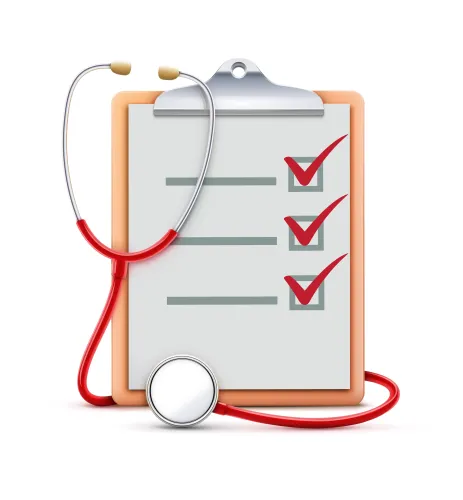Update Your Understanding of the New Screening Codes
Mental health and developmental disorders focus of latest ICD-10 revisions. The passage of the Affordable Care Act (ACA) in 2014 ushered in a new era of behavioral health integration, or BHI, that is rapidly changing the landscape of the health care field. According to the U.S. Department of Health and Human Services, the act specifically changed health care’s role in the treatment of patients with mental and substance abuse disorders in three distinct ways: “(1) by including mental health and substance use disorder benefits in the Essential Health Benefits; (2) by applying federal parity protections to mental health and substance use disorder benefits in the individual and small group markets; and (3) by providing more Americans with access to quality health care that includes coverage for mental health and substance use disorder services.” (Source: aspe.hhs.gov/report/affordable-care-act-expands-mental-health-and-substance-use-disorder-benefits-and-federal-parity-protections-62-million-americans.) In the last four years, these changes have necessitated many other changes in other areas of health care, none the least of which has been changes to the ICD-10. So, it comes as no surprise that the latest round of revisions features changes to the to the Z13.- (Encounter for screening for other diseases and disorders) codes. All the changes are going to affect primary care coding. So, read on and see what’s in store. What Are the Changes? Beginning Oct. 1, 2018, a new code group — Z13.3- (Encounter for screening examination for mental health and behavioral disorders) — will be added to ICD-10, while the Z13.4- (Encounter for screening for certain developmental disorders in childhood) will receive an extensive overhaul. You’ll now be able to report four new mental health screening codes, including: You’ll also have four more screening codes for childhood developmental disorders, including: Coders should also take note of the screenings covered by Z13.39, which will include screenings for alcoholism and intellectual disabilities after Oct. 1. And they should especially note that the Excludes1 instruction for Z13.4- that prohibits reporting with Z00.1- (Encounter for newborn, infant and child health examinations) has been deleted and replaced with an Excludes2 note that clarifies Z13.4- codes are separately reported from the codes with Z00.12- (Encounter for routine child health examination) Why Are the Changes Needed? “I suspect the addition of the Z13.3- codes is driven by an increased recognition of the importance of mental health and the ability to screen for it,” explains Kent Moore, senior strategist for physician payment at the American Academy of Family Physicians. “Currently, screening for depression, etc. is relegated to a not otherwise specified code: Z13.89 [Encounter for screening for other disorder],” Moore continues. But now, with the increased attention to mental health care, there is greater need for “more granularity and the ability to report some things more specifically than ICD-10-CM now allows,” Moore observes. The same, Moore believes, is true of the Z13.4- code additions, which are probably “driven by the increased attention focused on diagnosing and treating autism, which is otherwise currently lumped in with all other development disorders in an undifferentiated Z13.4.” Now, the changes to “Z13.4 mean that screening for autism can be specifically reported distinct from global developmental delays,” Moore concludes. What the Changes Will Mean Effectively, the changes in the Z13.3- codes will mean that coders will have to change the way they code depression screenings beginning Oct. 1. “Prior to implementation of these codes, a provider would have just selected the symptom and/or a less specific screening code to communicate the service provided,” says Sherry Wright-Fontenot, CPC, CPCO, CPMA, CEDC, AAPC Fellow, revenue integrity analyst at St. Luke’s Health System in Kansas City, Missouri. Now, rather than using the not otherwise specified code Z13.89, “the change means that screening for depression [Z13.31] and maternal depression [Z13.32] can be specifically reported,” Moore explains. Additionally, “screening for other specified mental health and behavioral disorders such as alcoholism will be reported with Z13.39, while screening for unspecified disorders will be left to Z13.30,” according to Moore. Such specificity should be very helpful not only to primary care providers but also primary care coders. Barbara Hays, CPC, CPCO, CPMA, CRC, CPC-I, CEMC, CFPC, AAPC Fellow, coding and compliance strategist at the American Academy of Family Physicians, believes that the greater specificity afforded by the new codes within Z13.3- and the expansion of Z13.4 will improve medical outcomes. “As early detection is key for treatment and outcome, these new codes allow screening encounters for conditions in which a patient may otherwise be asymptomatic,” Hays believes. “By having these clearly defined diagnoses options instead of ‘unspecified’ diagnoses, past evaluations and future courses of treatment can be focused rather than needlessly repeated,” Hays argues. This, in turn, will aid your ability to claim for such screenings. “The reporting of a nonspecific screen code often results in a request for medical records and a delay in payment,” says Wright-Fontenot. “So, these new screening codes will help the providers better communicate the type of visit or service they are providing to patients and, hopefully, create a positive impact for our providers’ reimbursement,” Wright-Fontenot maintains.




